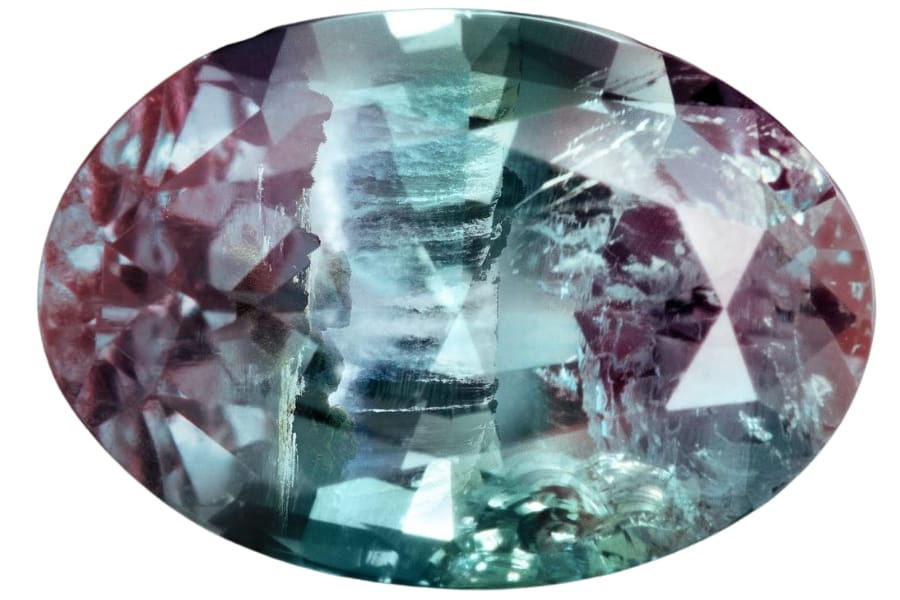Amethyst and alexandrite are beautiful gemstones that catch our attention because they can do remarkable things. Gemologists love both of these stones, and they are both used in different kinds of jewelry.
However, some things make them different from each other. They’re interesting not only because of how they look or how rare they are but also because of the stories they tell about how they got to us and how their colors and structures work scientifically.
In this article, we’ll be going on an adventure to learn more about alexandrite and amethyst. We’ll look into their worlds and compare and contrast their features, such as how they’re built, what they’re made of, and even the stories that go along with them!
By figuring out what they have in common and what makes them unique, we can better appreciate these natural wonders and learn what makes each one so appealing to gem lovers and collectors.
Let’s take a trip into the heart of these stones to see what’s hidden below their shiny surfaces.
Alexandrite vs. Amethyst – The Major Differences
First, let’s talk about what makes them different. These traits are the ones that stand out when the stones are put next to each other.
Appearance – Amethyst looks like six-sided prisms
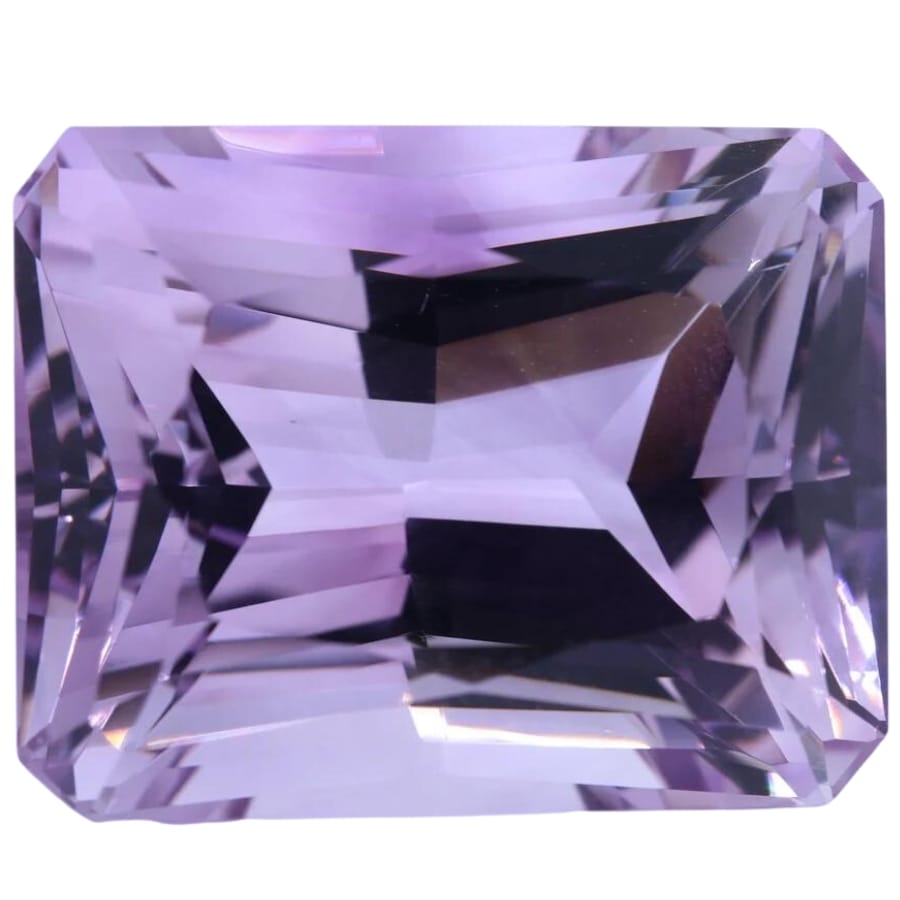
Crystal structure, transparency, and inclusions in alexandrite and amethyst are very different from one another, which has a big effect on how they look.
As for how they form crystals, alexandrite crystals usually look like short prismatic crystals with lines running through them, while amethyst crystals usually look like six-sided prisms that end in pyramidal points, often inside geodes, this is one of the things that makes each stone look different.
Different types of alexandrite range from clear to cloudy, with the most valuable stones being more transparent. There are also different levels of transparency in amethyst, and the level of transparency affects how bright and deep the gem looks. More clarity in both stones usually makes them more desirable and valuable.
Alexandrite can have needle-like inclusions and color zoning that runs lengthwise and widthwise. Amethyst is known for its “tiger stripe” or “zebra stripe” inclusions and its zoning patterns, usually bands of color that go from lighter to darker.
Amethyst may also have “chevron” patterns, which are v-shaped bands of milky quartz or other minerals that can be seen inside the stone.
Chemical composition – Alexandrite is a variety of chrysoberyl
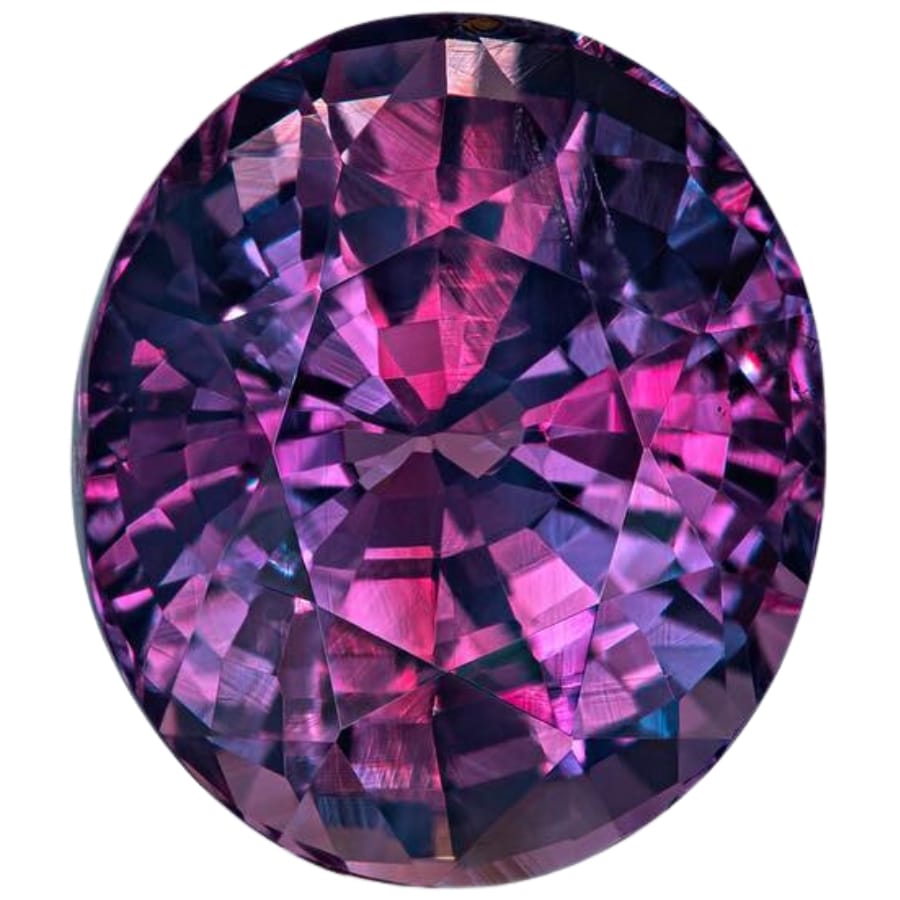
Alexandrite and amethyst have distinct chemical compositions that define their unique characteristics and appearances. Alexandrite is a chrysoberyl, its chemical formula being BeAl2O4.
The presence of chromium impurities in alexandrite is particularly crucial, as these are responsible for the stone’s color-changing properties.
Chromium ions replace some aluminum ions in the crystal lattice, causing intense light absorption over specific wavelengths, producing alexandrite’s color shift from green to red depending on the light source.
Amethyst is a purple type of quartz. It mostly comprises silicon dioxide (SiO2), which all quartz is made of. The substance that gives it its color is different from that of alexandrite.
The purple color of amethyst comes from iron impurities mixed with natural radiation. In particular, the iron impurities are structurally built into the quartz crystal lattice.
Exposure to natural ionizing radiation causes color centers to form, giving the stone its color.
Cleavage – Amethyst has no cleavage
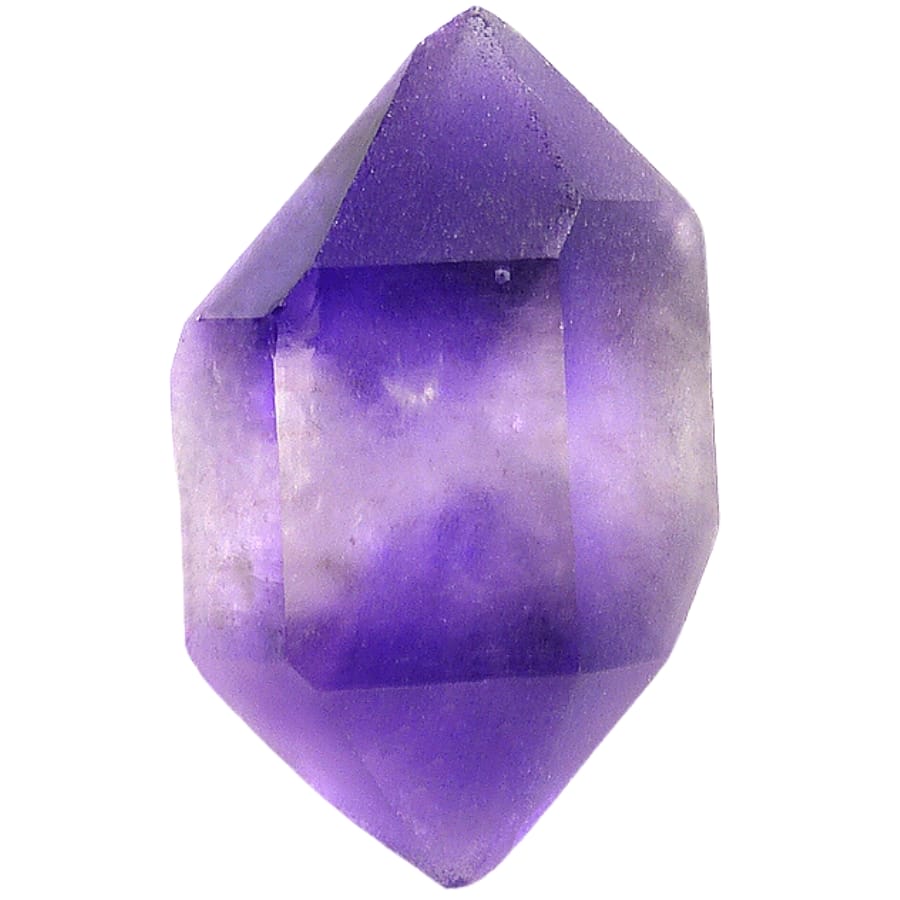
Cleavage is a mineral’s tendency to break along different weak spots in its crystal structure. This is important to know when working with gemstones, especially when cutting and shaping them.
Alexandrite doesn’t cut perfectly in one direction (basal). In other words, putting force on the crystal is more likely to break than to split smoothly along the cleavage plane.
In fashioned gems, its cleavage isn’t often visible because it’s not well developed, and the mineral usually breaks in a way that isn’t even. This property helps cut gems and make jewelry because it lowers the chance that the stone will die while being cut.
Amethyst doesn’t split in two. It breaks instead with a conchoidal fracture, which means it breaks along curved surfaces that look like the inside of a shell.
The crystal lattice’s strong silicon-oxygen (Si-O) bonds make it so the crystal doesn’t break. These bonds are strong in all directions. This means the crystal doesn’t have a weak spot where it wants to break.
Because of this, amethyst is easier to cut and shape for jewelry because it doesn’t tend to break along certain planes.
Color – Alexandrite shows a dramatic color change
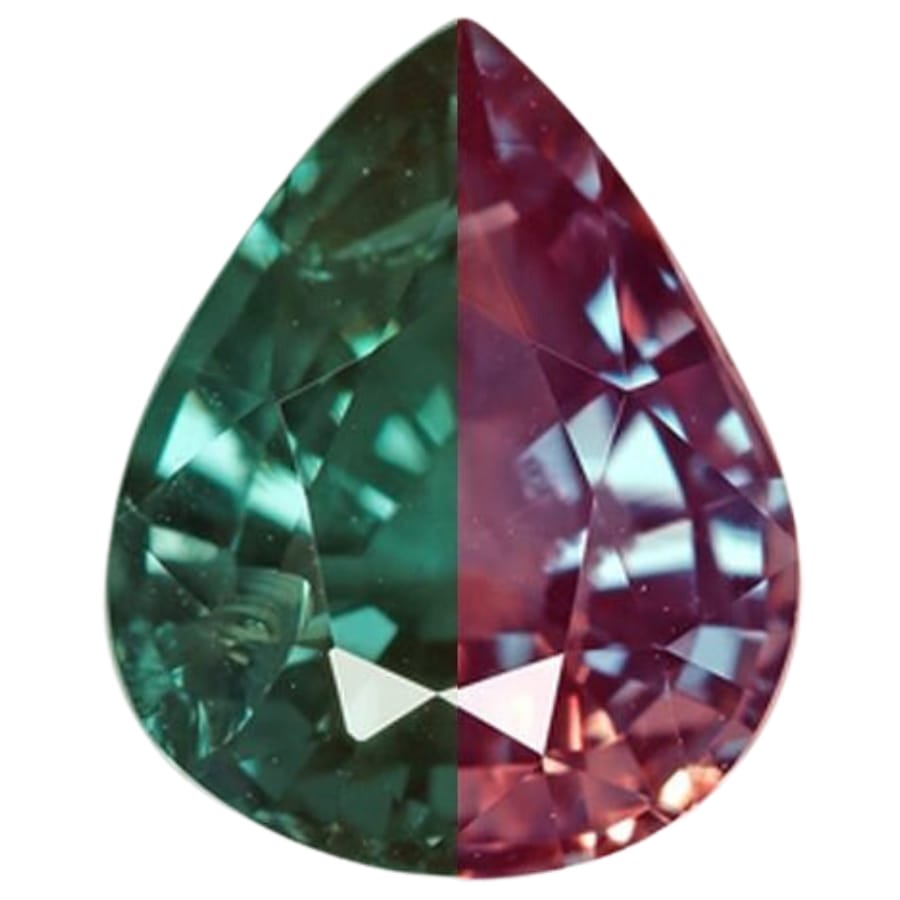
There are many chemical and environmental factors that make the colors of alexandrite and amethyst very different from one another. Alexandrite is a very valuable gemstone that is known for its amazing ability to change colors.
In daylight or fluorescent lighting, it appears green or bluish-green, but in incandescent lighting, it changes to a red or purple-red color. The “alexandrite effect” happens because of the complicated way that chromium impurities in the stone absorb light.
This lets the stone absorb wavelengths in the red and blue parts of the spectrum while reflecting green ones. The big change in color is caused by the stone interacting with different light sources that have different color mixes.
When it comes to amethyst, its rich purple color stays the same no matter what light source it’s in. This color of purple can be anything from a light lilac to a deep, intense violet or reddish-purple.
It comes from iron impurities in the quartz, trace elements, and natural radiation. Quartz’s unique purple color comes from iron impurities in its crystal lattice and its exposure to low-level natural radiation, which creates color centers.
Density – Amethyst is less dense
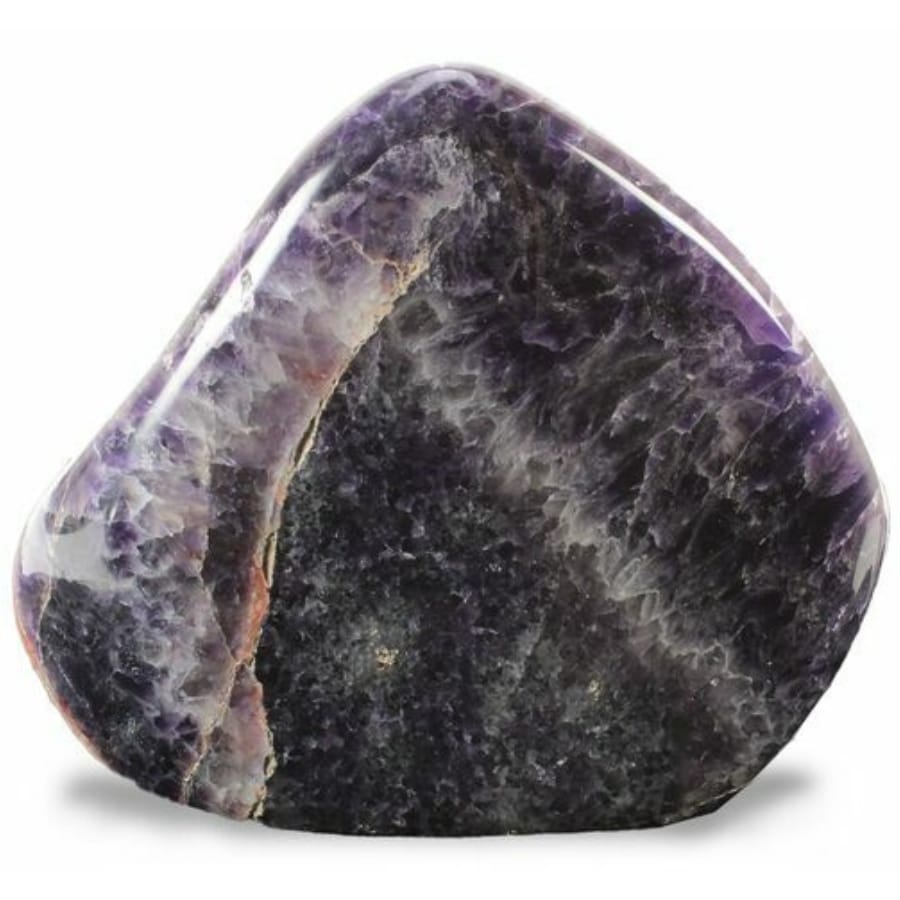
Density, which is mass per unit volume, is one of the most essential characteristics of gemstones. In this way, alexandrite and amethyst are very different from each other.
Alexandrite is a type of chrysoberyl mineral. Its density is between 3.5 and 3.84 grams per cubic centimeter.
It has a high density because it has heavy elements in its crystal structure, like beryllium and chromium, making the stone heavier and more compact.
The specific gravity of alexandrite can tell you a lot about the quality of the stone and the place where it formed. Gemstones of higher quality usually have a higher density.
The specific gravity of amethyst, a purple form of quartz, is between 2.65 and 2.67 grams per cubic centimeter, which means it has a lower density. The main ingredient in amethyst is silicon dioxide, which is a lighter element than the ones that make up alexandrite.
This makes the crystal less dense overall. The fact that different pieces of amethyst don’t have very different densities is also a sign of how uniform its chemical makeup and crystalline structure are.
Formation – Alexandrite forms in metamorphic rocks
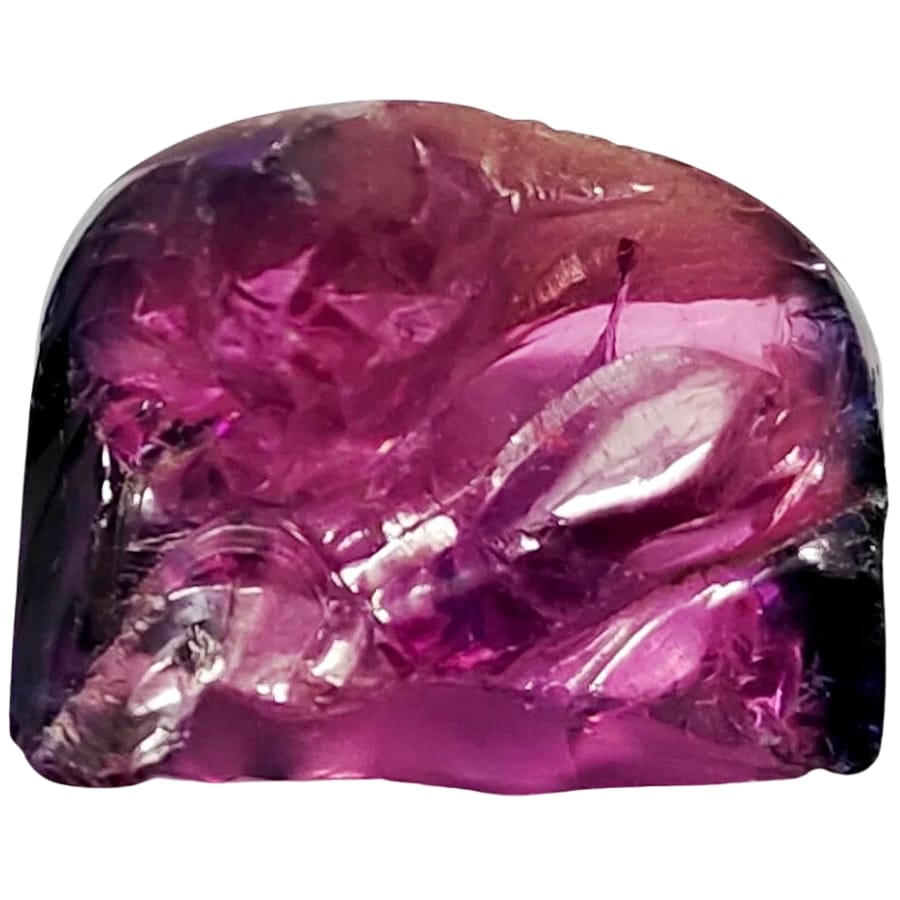
Alexandrite and amethyst come from different geological processes and environments, so they have different properties and can be found in different places.
Alexandrite usually forms where rocks are changing, like mica schists, which are changing and contain emeralds. It also sometimes forms in granitic pegmatites or hydrothermal veins.
The area’s high-pressure metamorphism of sedimentary manganese-rich rocks is linked to its formation. Chromium, an important element for alexandrite’s color change, is added to the mineral’s chemical structure when it forms, which needs certain geological conditions to happen.
It’s important that beryllium, chromium, and not silica are present for alexandrite to form instead of emerald, which is another beryllium mineral that forms differently.
The formation of amethyst can be found in igneous, metamorphic, and sedimentary rocks. However, it’s most often found in silica-rich igneous rocks, especially in geodes, which are the gas-filled spaces in lava flows.
It can take millions of years for these geodes to form because the amethyst crystals grow layer by layer in the cracks in the rocks.
Fluorescence – Amethyst does not exhibit fluorescence

When gemstones are exposed to ultraviolet (UV) radiation, they fluoresce, giving off visible light. Alexandrite and amethyst sparkle in different ways in this way.
Depending on where it comes from, alexandrite can fluoresce differently when exposed to UV light. Under long-wave UV light, stones from some sources may show a weak to moderate red fluorescence, while stones from other sources don’t react.
The presence of chromium has a significant effect on alexandrite’s fluorescence. It’s this element that causes its dramatic color change. However, the amount of fluorescence in alexandrite depends on more than its chemical makeup.
It also depends on the geological conditions it formed, such as the trace elements present when it crystallized.
Amethyst doesn’t usually have strong fluorescence when UV light is on it. For the most part, fluorescence is weak and tends toward blue, green, or red colors when exposed to long-wave UV light.
This depends on the amount of iron and other small impurities present. But most amethysts don’t have any fluorescence at all, or only a very weak one. This is because the iron in amethyst stops fluorescence.
Hardness – Alexandrite ranks 8.5 on the Mohs scale
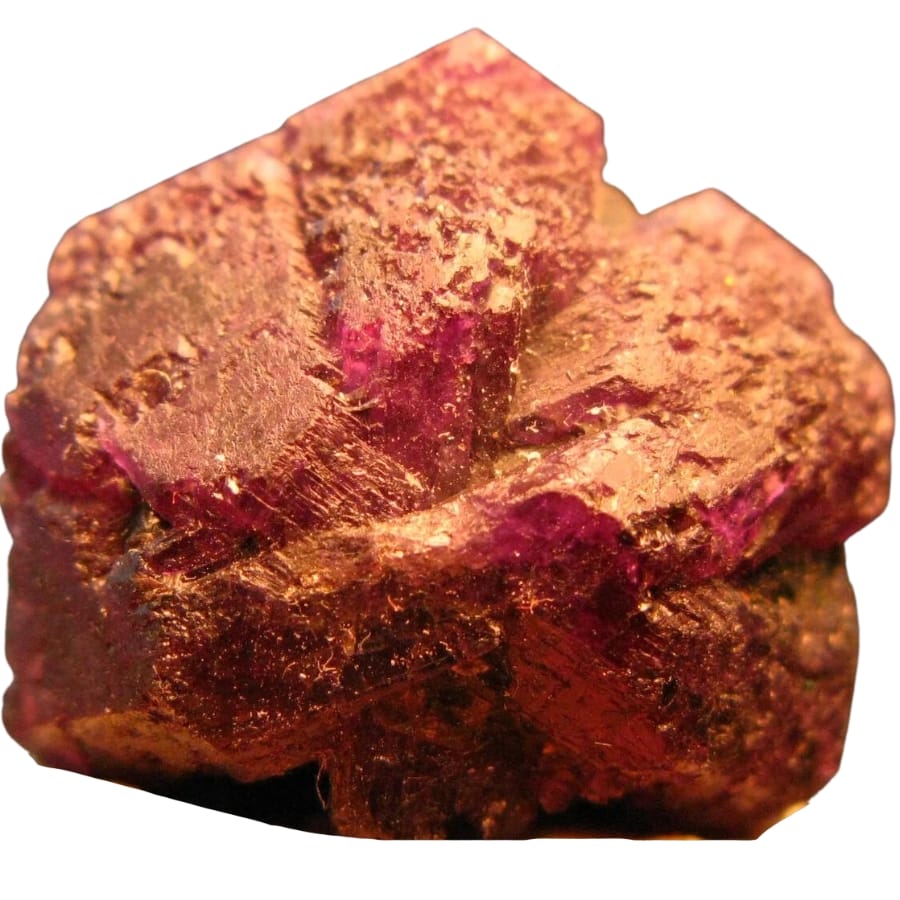
The different chemical makes up and crystal structures of amethyst and alexandrite make them different in how hard they are.
Based on the Mohs scale, alexandrite is 8.5 out of 10. It’s chrysoberyl made of beryllium aluminum oxide, a strong, long-lasting substance. Due to its high hardness, alexandrite doesn’t easily scratch or wear away.
This makes it perfect for jewelry like rings and bracelets,, often worn against rough surfaces. Because it’s so hard, it is also harder to cut and facet, so it takes more skill.
The Mohs hardness of amethyst, a purple form of quartz, is 7. This means it’s pretty hard, but not as hard as alexandrite. Amethyst is made of silicon dioxide and is strong enough to be used in most types of jewelry.
However, it may show signs of wear over time, especially in rings that get hit. Because it’s not as hard as alexandrite, it gets scratched more easily by everyday things.
It needs to be handled and stored with more care to prevent damage. But because of the same quality, amethyst is more accessible to cut and shape than harder stones.
Price – Amethyst is more affordable

Alexandrite and amethyst have very different prices because of how rare they are, how good they are, how much people want them, and how important they are historically.
Alexandrite is very expensive because it is one of the rarest gemstones in the world. Its unique ability to change colors is a natural wonder and a big reason collectors want to buy it and raise its value.
Sometimes, high-quality alexandrite with an apparent color change can fetch very high prices, even more than diamonds, depending on the carat weight. Large alexandrite stones are also very hard to find, which adds to their value.
Prices of alexandrite go up exponentially with size. Also, natural alexandrite is becoming harder to find because most stones on the market are now lab-made, which makes them cheaper but much less valuable than natural stones.
While historically considered a precious stone, amethyst has been abundant since the 19th century, particularly in Brazil and Uruguay, leading to a significant decrease in value.
Despite its beauty and status as the birthstone for February, amethyst’s price is considerably more affordable and accessible. Even high-quality amethyst with deep purple coloration and minimal inclusions is modestly priced, making it a popular choice for various types of jewelry.
However, very high-quality amethyst, known as “Deep Russian,” is rare and can be more expensive, though not nearly as costly as alexandrite.
Amethyst vs. Alexandrite- The Similarities
Amethyst and alexandrite are not the same but alike in some ways. Gemstones are more interesting when you know what they have in common.
Conductivity – Both alexandrite and amethyst are poor conductors of electricity
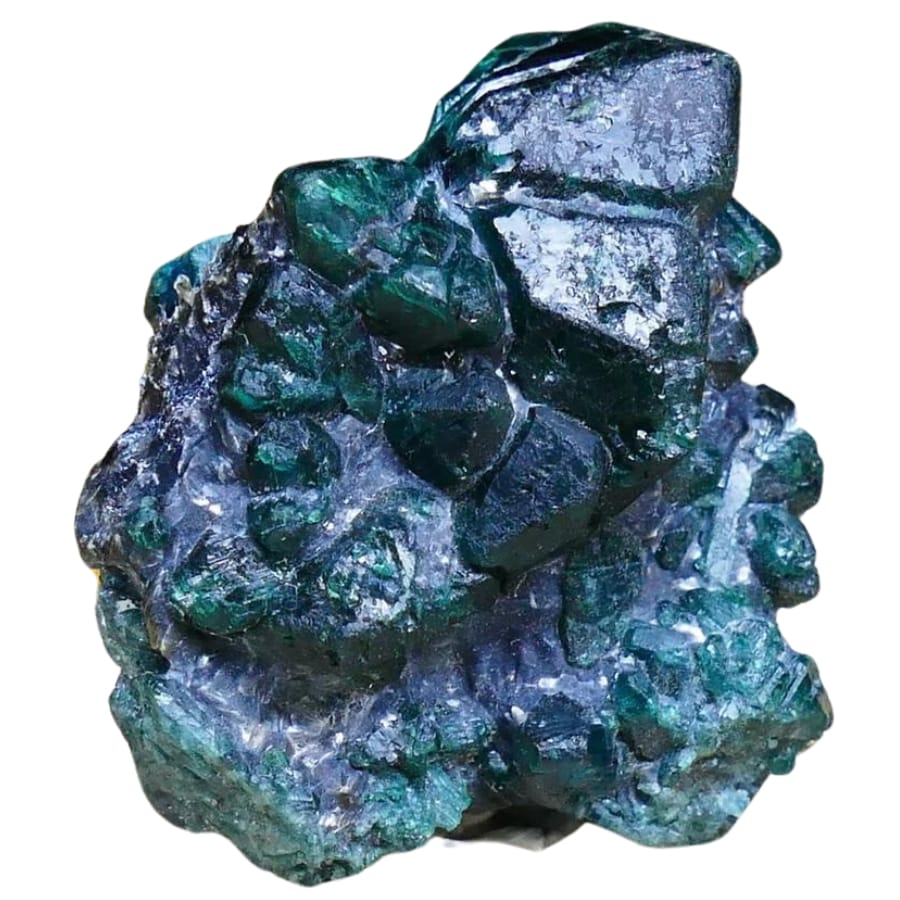
Alexandrite and amethyst are both types of gemstones that have similar electrical properties. Their main trait is that they don’t conduct electricity well.
Even though these minerals have different elements, they have covalent bonds in their crystal structures. These bonds make tight networks where electrons can’t move around freely like they can in metals, which usually are conductors.
Alexandrite and amethyst are dielectrics, meaning they have a very high resistivity and a low conductivity. Because of how the electrons are structured in these minerals, the atoms are tightly bound and can’t move around freely.
This means that electric current can’t flow through them. They don’t conduct electricity, even when exposed to high voltages. Instead, they act as insulators and stop the flow of current.
This means that jewelry or parts made of alexandrite or amethyst would not conduct electricity in real life. This makes the jewelry or parts made from these gemstones safer and more comfortable to wear.
Remembering this when you store and handle them is important, since they don’t discharge or react in places with strong electromagnetic fields.
Location – Amethyst and alexandrite can be found globally
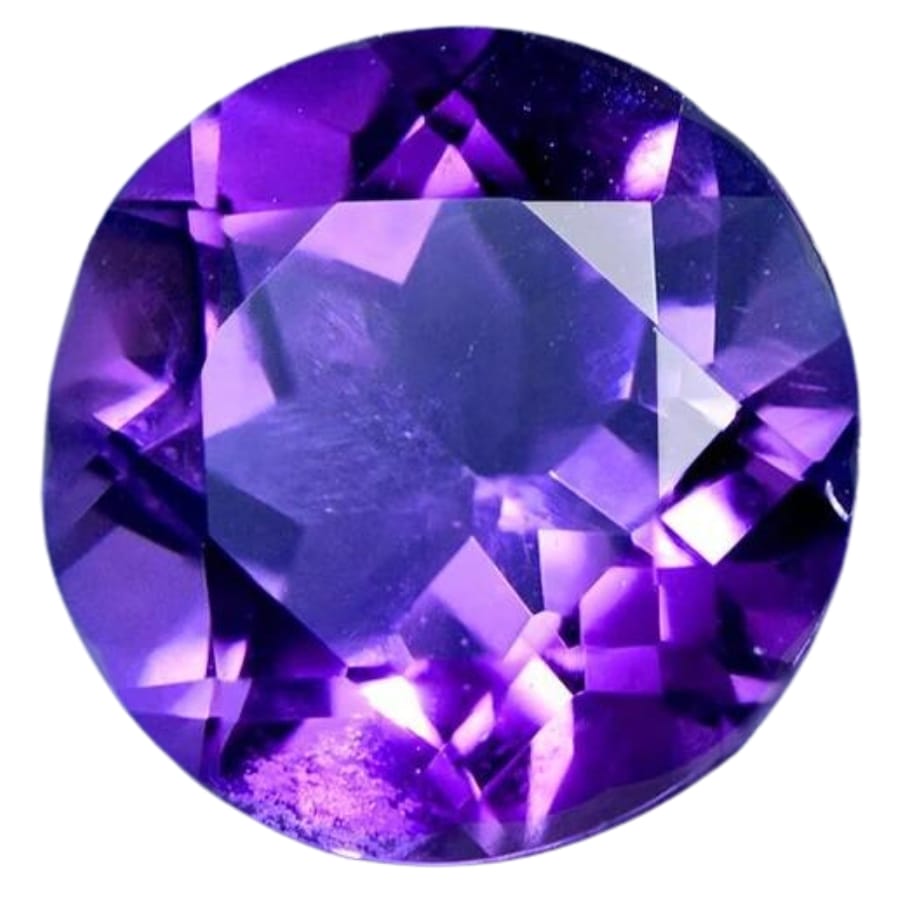
Alexandrite and amethyst are different in how they look and what they are made of, but they both come from a lot of other places around the world. You can find amethysts and alexandrite in these rockhounding locations.
You can find both of these gemstones in different places around the world, but the amounts and quality of them vary. This is because of the complicated geological processes that led to their formation.
The Ural Mountains in Russia are where Alexandrite was first found, and the country used to be the primary source of this gem. But as those places’ resources have run out, other places worldwide have become major producers.
It’s worth mentioning that there are large amounts of alexandrite in Brazil, Sri Lanka, and East Africa, mainly in Tanzania and Madagascar. The geological conditions in each place make stones that are different from one another and change color in different ways.
Amethyst can be found all over the world, but the countries of Brazil and Uruguay in South America tend to have the most large deposits.
The Rio Grande do Sul region in Brazil and the Artigas region in Uruguay are known for having some of the best amethysts in the world. Zambia, Madagascar, Mexico, and even some parts of the United States, like Arizona, are well-known places to mine amethyst.
Amethysts from different sources have different shades of purple and levels of clarity. This is often because of the geology of the area and the trace elements present when the stones were formed.
Luster – Alexandrite and amethyst both exhibit a vitreous luster
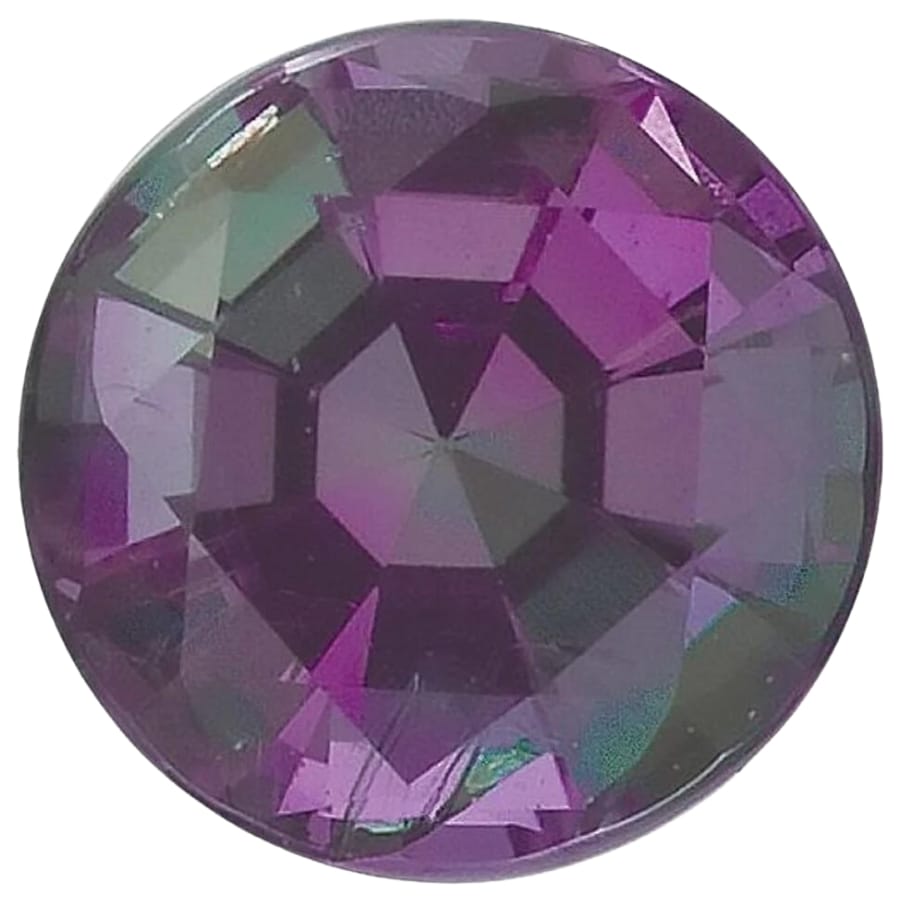
Alexandrite and amethyst are highly valued gemstones, and they have something in common that makes them so appealing: they shine.
Luster is a word for how light moves on the surface of a mineral, rock, or crystal. The luster of these two gems is vitreous, which means it looks like glass.
The vitreous luster of alexandrite and amethyst comes from how their crystals are structured and what they are made of.
After being cut and polished, the surfaces of these two gems are shiny and reflect light like glass. This makes them very appealing for jewelry.
This glassy sheen not only makes the color and clarity of each gem look better, but it also makes them shine and changes the way light hits them. An attractive stone has a vitreous luster, meaning light hits it and bounces off at different angles.
This makes the stone look better overall. This shine goes well with alexandrite’s unique pleochroism, which is its ability to change color in different lighting.
Amethyst’s rich purple color is brought out even more by the vitreous luster, which makes it more desirable.
Magnetism – Neither amethyst nor alexandrite are magnetic
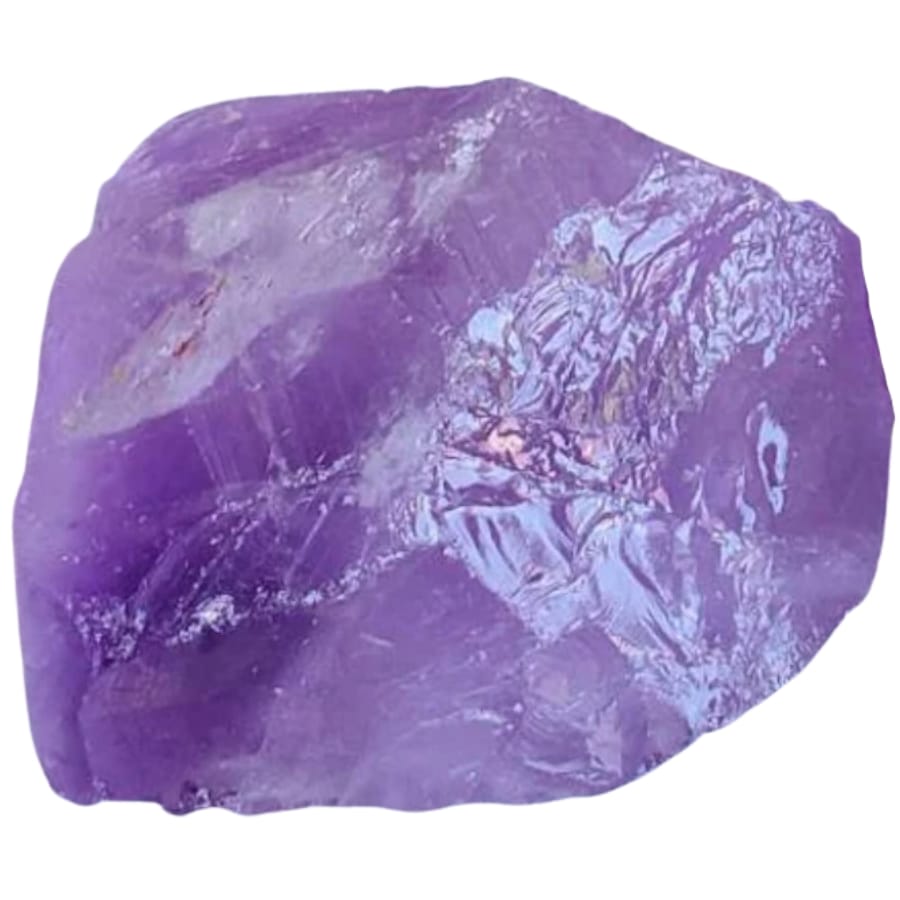
Magnetism in minerals means they can be drawn to or pull a magnet toward them. This is because of how the atomic moments in their crystal structure are arranged.
The magnetic properties of alexandrite and amethyst are very similar. This is because both are diamagnetic materials.
Any material can be magnetic, but some are more magnetic than others. This is called diamagnetism, meaning that a magnet will push against a material. This property is very weak, and seeing it in a lab is usually only possible.
The reason why alexandrite and amethyst are diamagnetic is because of the way their electrons are arranged. The electrons in their atoms are paired, and magnetic fields push them away slightly.
For gem hunters, jewelry makers, and regular people, alexandrite and amethyst’s magnetic properties don’t usually change how they are used or how much people want them.
But knowing about these properties is important for some scientific and industrial uses. The weak diamagnetism is something that many gemstones have in common. Their atomic and electronic structures are the root cause of it.
Streak – Both alexandrite and amethyst have a colorless streak
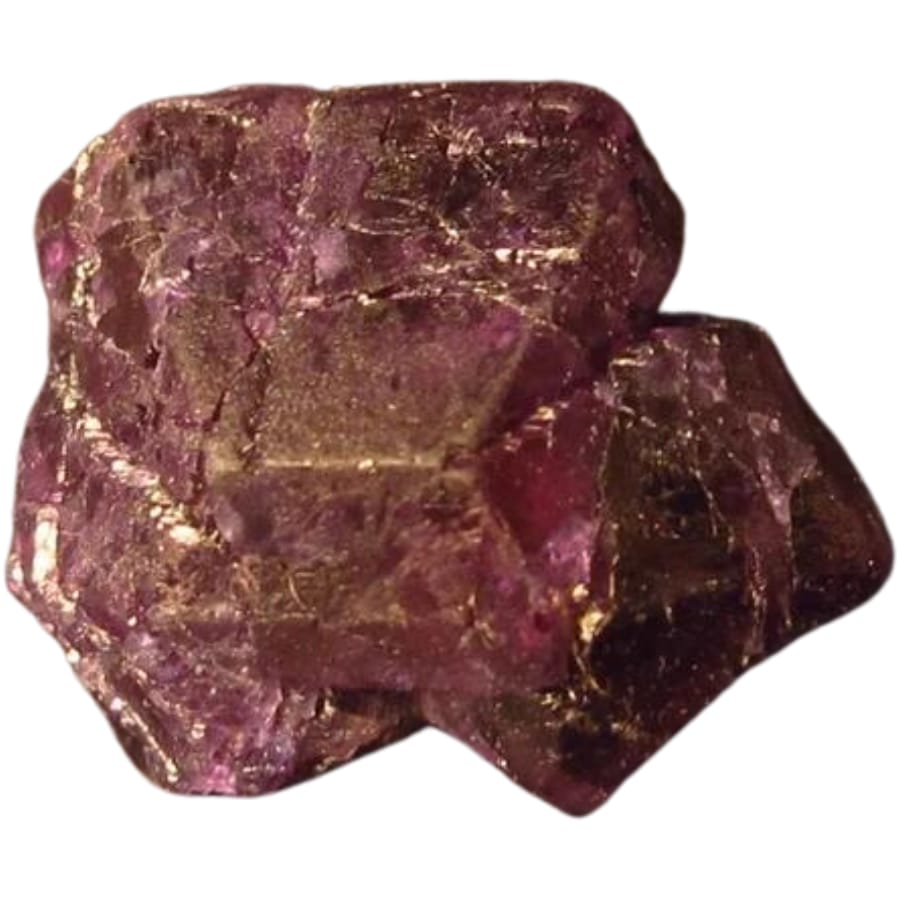
When a mineral is dragged across an unglazed porcelain plate, it makes a powder called “streak.” The powder is a certain color (known as a streak plate).
Even though alexandrite and amethyst are made of different chemicals and look different overall, their streaks have one thing in common.
Alexandrite and amethyst usually leave a white or colorless streak on a streak plate. It’s easier to tell what color a mineral is by its streak than by its surface color, which can change because of impurities or environmental changes.
Because the streak test shows the mineral’s true color, it doesn’t consider weathering or irradiation, which can change how a gemstone looks on the outside.
A white streak can be seen in both alexandrite and amethyst. This is common in many minerals and gems, especially those with a Mohs hardness of 7 or higher.
This is because the powdered form of these minerals doesn’t keep the same color as the larger crystal. This demonstrates that a mineral’s color may result from impurities and isn’t an essential component of the mineral’s structure.
The Easiest Ways To Tell Alexandrite and Amethyst Apart
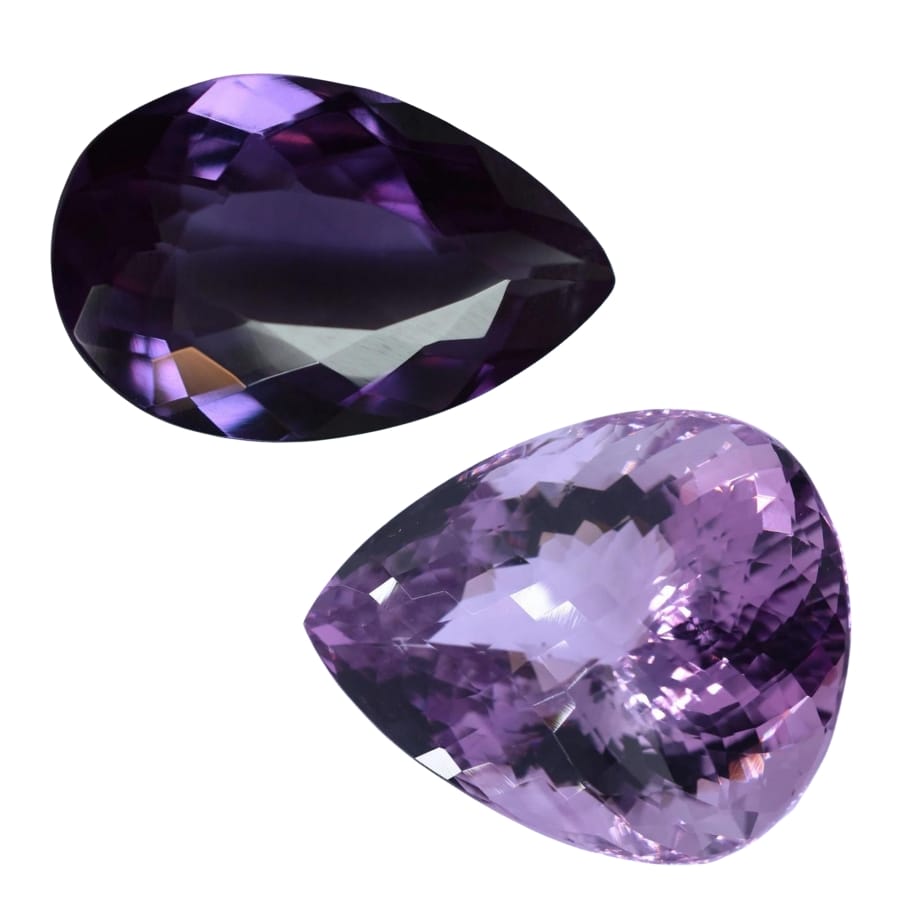
There are several ways to tell the difference between alexandrite and amethyst. It’s enjoyable to try to recognize what makes them unique. Even though they look alike, they are not the same in some important ways.
Check their color
Amethyst is famous for its beautiful purple hue, ranging from light lavender to deep violet. This color is what makes amethyst so loved and recognizable. If you see a gemstone that’s any shade of purple, there’s a good chance it’s an amethyst.
Alexandrite has a magical trick up its sleeve. It can change color! In daylight, it usually appears green or bluish-green, but it turns a reddish-purple under artificial light, like from a lamp. This color-changing ability makes alexandrite stand out and is a big clue to its identity.
Know their origin stories
Alexandrite was named after Tsar Alexander II of Russia, where it was first discovered. Since then, other places like Brazil, Sri Lanka, and Tanzania have found alexandrite deposits.
Amethyst, however, has a more widespread presence. You can find it in many parts of the world, including Brazil, Uruguay, and even some parts of the United States.
Compare prices
Because of its rarity and unique color-changing ability, Alexandrite is often more expensive than amethyst.
While amethyst can be pricey, especially for high-quality pieces, it’s generally more affordable due to its abundance.

